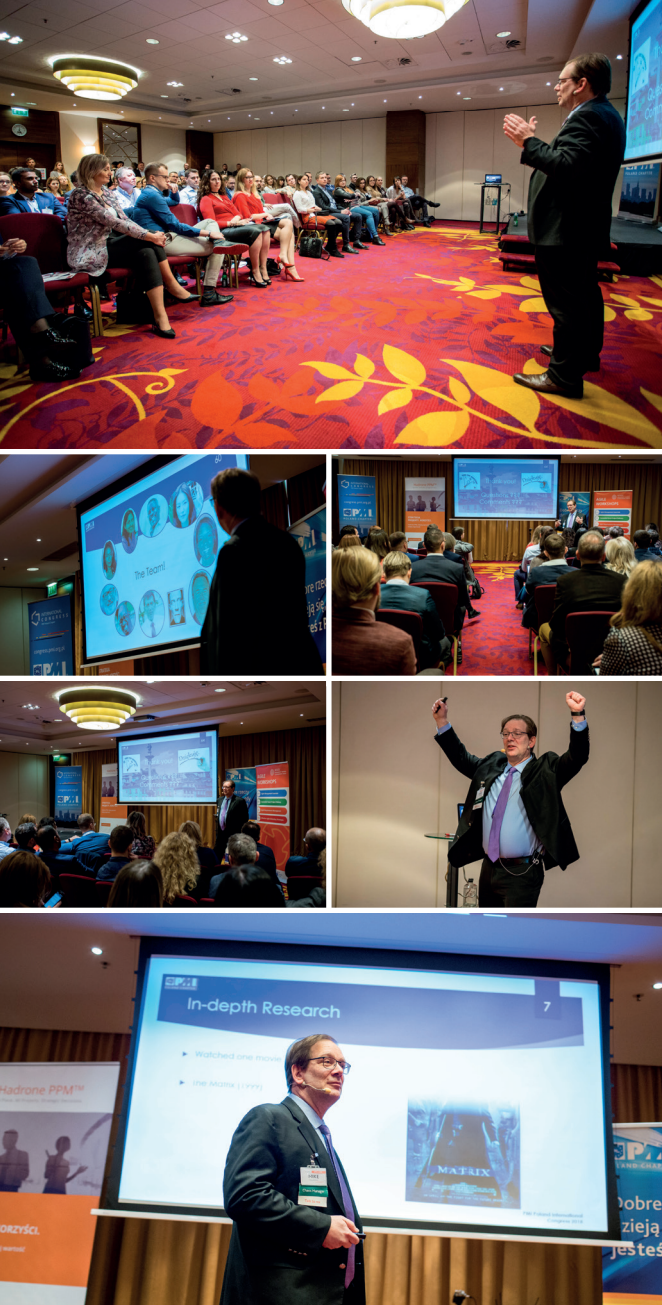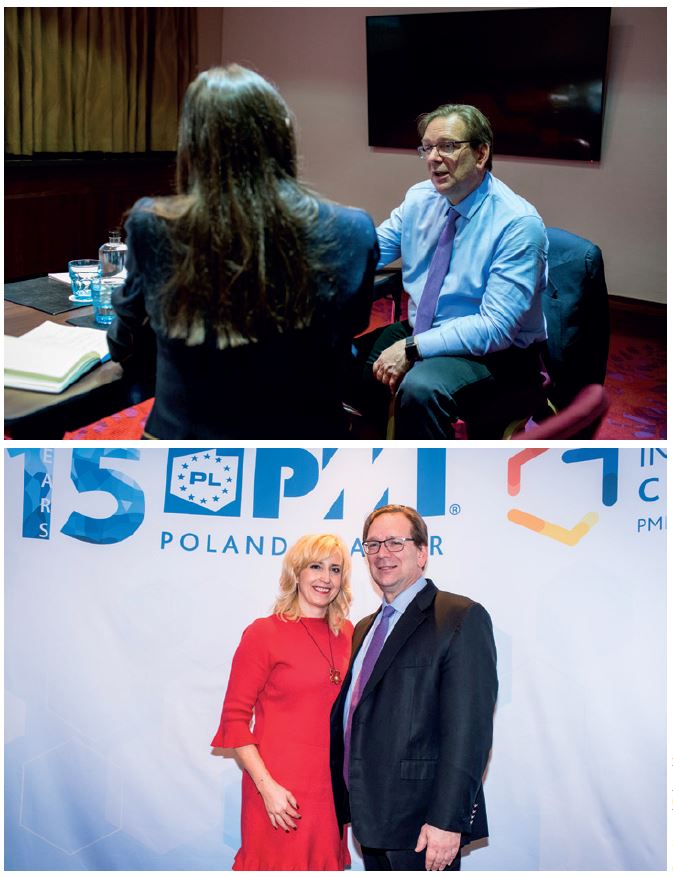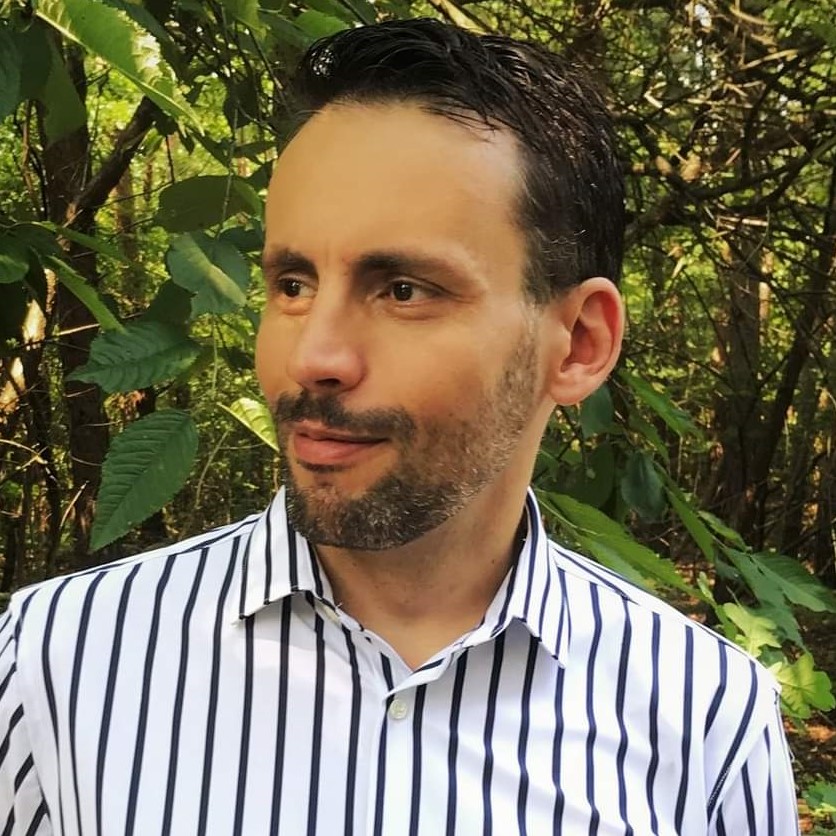Interview with Mike Palladino conducted by Szymon Pawłowski
During the 13th International PMI Poland Chapter Congress you presented the concept of the 4th Industrial Revolution. Could you give us an insight to its background and crucial elements of this revolution? What does it mean to all mankind and to us, project management practitioners?
We are currently going through the 4th Industrial Revolution. This includes the current changes coming from robots, artificial intelligence and their impacts. To understand how an Industrial Revolution progresses, I decided to look at the previous industrial revolutions to understand what has happened in the past. And now that we’ve gone through those industrial revolutions, what did they look like, looking backwards in history. What I realized is we don’t even talk about what changed during past industrial revolutions, they become part of our lives, part of what we do on a day-to-day basis. I then made that same extrapolation for the current changes that we’re in, that I believe we are going to be able to survive going through the new changes. In the future our children, our grandchildren will also look back and wonder why there was such a big concern, it will be part of their lives, since they will grow up in that new environment.
We said a lot about robots and the use of them, but not every area would be so easy to automate. Which areas would be the hardest to automate and what will happen with them?
Areas that require complex thinking and creativity, are the hardest to automate. For example, putting on make-up, or perhaps, providing manual adjustments to the back and spine, or perhaps helping to understand the social impact of other people. Humans have an amazing skill to interpret what we are seeing and be able to respond with very little information. Those areas today still have been very difficult for any type of automation or robots. And from what I read and understand it’s still a very difficult area. Another area is human desire, such as our desire to run a business or environmental or humanitarian goals. It is something that, perhaps the equations and the money don’t look good on paper, but yet we have an emotional reaction and emotional need to provide support and related services. This is an area we don’t understand ourselves, so it would be very difficult to translate it to automation and robots.
 Fot. Konrad Zalewski
Fot. Konrad ZalewskiSo, how do you think, what are the most important advantages of humans comparing to robots an artificial intelligence?
I would say the advantage is that we can process data quickly with very little information. When I think about how much programming and timing it takes for automation it’s still humans who have to provide the training, it’s still humans who have to pick the data set for those machines. As the robots become more and more complicated, we need more and more humans to help the robots interpret the data. Based on this trend I think that’s still our advantage, we can use tools and automation to help support things that humans want to do. But I don’t see in the near future the point where robots will take on those type of decisions themselves.
During your speech at the International PMI Poland Chapter Congress, you gave us some examples of crises and panics from our history, when new technologies came into the light. Should we expect similar common panic in the nearest future, when robots become much more popular?
Yes, because we already see fear today. People are afraid and panicked about the changes. People who are in technology perhaps may understand the technology changes better. But people who are not directly involved in technology, one of the few ways they hear about the future is either through movies or through the news. In many cases the information that comes from those organizations are exaggerated and emphasized to sell movies, newspapers and the magazines. Therefore, the majority of people receive a very skewed view of the situations that are occurring today. Those who are creating those changes are reluctant to share their failures. They tend to only highlight their potential successes, therefore again we have very biased and very skewed view of what truly is happening. So, I believe we’re already experiencing some of those panics and in the future we may see even more panic as well.
 Fot. Konrad Zalewski
Fot. Konrad ZalewskiAs you’ve said extreme predictions are the most popular because they draw attention of people. You gave us also some examples of bad predictions, why are we so poor when predicting future events?
I would say two areas. Number one, we make the mistake when we assume data is very linear and in many cases it’s not linear. We look at something complex and treat it as though it is simple. For example, take weather prediction. We are still not very good at precise weather prediction. Yes, we can assume it will snow in the winter in the North, yes, we will assume it will be warm in the summer. But any more precise calculation is a very difficult. The inputs to the equations are very sensitive and the problem itself is not easily predictable. But I think we as humans assume many of these problems are predictable therefore, we can predict the future. We apply false assumptions, false data to something to try to predict the future that may not be predictable, just by its very nature.
Let’s move now into the field of project management as professional discipline. How do you think, what do all these 4th Revolution, AI, robots, mean to our profession?
The types of projects we work on will certainly change; they will include more robotics. In terms of the project management profession itself in some ways it will be valuable to have improved predictive tools that may help provide some general guidance. I think the other side of the equation is we are going to start to gather more data that may not necessarily be useful. Our profession may become bogged down in data collection. Attempts to analyze data may give us a false sense of understanding the future when in fact it may not be predictable. Because we are trying to predict people’s behaviors, we are trying to predict how people move forward. Therefore, we may be spending more time with the data and automation where instead we would be better served by spending more time with people, interacting, talking, and understanding how we are progressing together as the team.
 Fot. Konrad Zalewski
Fot. Konrad ZalewskiWhat should be our answer to this changing world? Using agile more extensively should be enough?
To me Agile is less about software development, it’s more about how teams work, behave and function together. It is very applicable to non-IT organizations. In the near future people are going to learn more about agile techniques for business communities. As project managers we need to understand those trends because they are going to become more commonly used and adopted. This is a current trend that has been around for some time and may continue to stay therefore project managers need to learn and understand agile. The challenge that project managers have is they assume it is just another methodology. They assume a Scrum Master is just another type of Project Manager which is not true. The skills of a Scrum Master are different from the skills of Project Manager. A project manager is more the leader who drives decisions and the team. A Scrum Master focuses more on facilitating and helping the team make decisions for themselves. It is more of a passive role, but it is also much more difficult role because it involved responding to how the team is performing. It’s hard to teach we cannot simple give someone a checklist. It takes a certain type of person who is good at reading people, reading body language, understanding human dynamics and helping to improve team dynamics. When we think in those terms, we can see how it may look similar to a Project Manager but the skills are applied in a different way.
And the last question is about communications. You pointed out that we do not communicate clearly. All the time, at every conference we talk about clear communication but still we are poor at it. So, what should we do better?
From the conferences I believe we talk about the “what”, not the “how”. We all say yes, clear communications, but what we need in our community is better examples of good communications. In my experience as a teacher, I found adults learn better by seeing examples, working through change, and learning by experience. Sometimes we are too vague in our description and discussion of what is clear communications. To me, clear communications comes down to understanding who the receiver is, what do they want to know and how do we keep the message as simple, precise and short as possible. Three or four sentences are more effective than thirty-five sentences. If we can focus on what the receiver wants to know and if we think of ourselves from their perspective, it will help us write updates and status better. Additionally, we should be going back and confirming with our stakeholders and sponsors that the type of information is what they want. If we’re not always confirming and updating our understanding there is the chance, we will drift from what they need. Their needs may change, we don’t recognize the change, we keep communicating the previous way or maybe they have the new needs and they are not saying anything. We as Project Managers need to, perhaps once a month, maybe every other month, ask those questions: “Can we talk about better communication?” “How can we as a team communicate better?” To the sponsors: “Are you getting what you need?” “What else can I provide?” “What other ways can I help you understand where we are from the project perspective?” Those types of questions will clarify and simplify communications and will help bring about better results for projects.
Michael is a Project Management and Agile professional with broad experience across several industries. He is the Head, Agile Methods Center of Excellence at Bristol-Myers Squibb Pharmaceuticals. Mike is an adjunct Professor at Villanova University, Past President of PMI-DVC and has presented in several countries for over 15 years.

[PL] Redaktor naczelny Strefy PMI. Konsultant, trener, mentor i kierownik projektów z wieloletnim doświadczeniem we wdrażaniu rozwiązań z zakresu zarządzania projektami, portfelami, PMO i ryzykiem. Obecnie pracuje jako PPM Architect w PeopleCert, rozwijając standardy zarządzania spod znaku AXELOS (PRINCE2, MSP, MoP, MoR itd.) Pasjonat zarządzania projektami, ciągłego doskonalenia i dzielenia się wiedzą. Prywatnie – miłośnik górskich i leśnych wędrówek, żeglowania, książek, czarnej kawy i czerwonego wina.
[ENG] Editor-in-chief of Strefa PMI. Consultant, trainer, mentor, and project manager with many years of experience in implementing solutions in the field of project management, portfolios, PMO and risk. Currently works as a PPM Architect in PeopleCert, developing AXELOS’ PPM suite of standards (PRINCE2, MSP, MoP, MoR etc.). Passionate about project management, continuous improvement and knowledge sharing. Privately – a lover of mountain and forest hiking, sailing, books, black coffee and red wine.